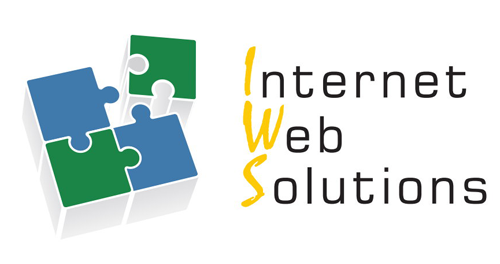|
Teaser
Did you know that in 2022 we have exhausted all the natural resources that nature is able to provide us already on July 28th? ...which means we needed the resources of 1.75 planets Earth to meet our needs in 2022...does that sound right?
Video
| |||||||||||||||||||||||||||||||||||
|
Sustainable approach for MSMEs Sustainable approach for MSMEsClick to read
 What do you imagine by being sustainable? How would you describe the meaning of sustainability to your friend? What is the sustainable approach your company applies? Answer the questions and watch this video Sustainable concerns in global development got attention in the mid-last century. Read about several milestones related to the issue of sustainable development regarding the creation of an international framework for further direction: 1972 – United Nations Conference on the Environment was the first world conference on the environment in Stockholm also known as the Stockholm Conference. It represents the international beginning of a dialogue between developed and developing countries about the link between environmental issues (mainly pollution of water and air), economic growth, and the well-being of people. Moreover, the United Nations Environmental Programme (UNEP) was created. 1992 - The United Nations Conference on Environment and Development (UNCED) was held in Rio de Janeiro also as an occasion of the 20th anniversary of the Stockholm Conference (1972) focused on the human socio-economic impact on the environment. UNCED or the „Earth Summit“ recognized that: the concept of sustainable development was an achievable goal for all people; to meet the human needs for sustaining life on Earth is vital to balancing economic, social, and environmental concerns - for such integration, a new perception of consumption and production, the way we work, live, and make decisions is significant. 2015 – Summit on Sustainable Development was held at the UN Headquarters in New York where the Agenda 2030 including 17 sustainable development goals was formally approved. Two months later, Paris Agreement was signed and ratified by 187 parties at COP21 in Paris. 2022 – Stockholm+50 international meeting took place after fifty years since the 1972 Stockholm Conference and was determined to accelerate the goals of Agenda 2030. Read the key recommendations for accelerating action towards a healthy planet for the prosperity of all. Sustainability in the context of MSMEs Click to read
 Sustainability in business refers to
Why act sustainably?
The Earth doesn’t produce unlimited natural resources. On the contrary, we live in a truncated world of resources called planetary boundaries that must be respected to avoid environmental, social, and economic consequences. Watch the video about planetary boundaries and their current state here. Operational implications for MSMEs Click to read

Considerations of sustainable operational implications you can apply within your company include:
Check the Sustainable trends for MSMEs for 2023 by Dr. Ayman El Tarabishy
Foundations for social entrepreneurship Foundations for social entrepreneurshipClick to read
 Social entrepreneurship is a way to sustainably solve societal challenges! According to the European Commission:
Based on the numbers, we can see that social entrepreneurship has a big potential to grow. The actual disadvantage is very low public exposure and recognition. Let´s learn more about what social entrepreneurship is and what added value could your business gain with this approach! Source: Business Jargons, read more about social entrepreneurship here. How is social entrepreneurship different?Click to read
 In general, entrepreneurship is based on profit maximization and this profit can be divided among the owners. Social enterprise can operate in any field and generates profit as any other business - the difference is how the profit is used! The profit is reinvested and fulfills a clear social mission that positively impacts a community! Social enterprises reinvest a certain share of their profit based on the relevant national law – e.g. Social enterprises in Slovakia put more than 50% of the profit back into the organization to expand and improve their services and activities that they carry out in order to fulfill their socially beneficial goals.
Social enterprises vs. profit-maximizing business and non-profit organisations: Source: Building Social Business Models: Lessons from the Grameen Experience Muhammad Yunus, Bertrand Moingeon and Laurence Lehmann-Ortega
Often, in the eyes of the public, social entrepreneurship is mainly associated with the integration of disadvantaged people.
BUT social missions can support the community’s well-being in many other fields than job creation and social inclusion of vulnerable groups, for example, cultural needs, healthcare, environmental protection, etc. For a better picture of the answer to the question „What is Social Entrepreneurship?“ watch the video created by Cluster for Eco-Social Innovation and Development CEDRA Split. Check examples of successful social enterprises and social innovation projects in selected countries described in the Handbook on Social Innovation prepared by experts from Slovakia or good practices identified within the project BRESE, Interreg Europe. Social entrepreneurship vs. Corporate social responsibility (CSR)Click to read
 Corporate social responsibility (CSR) is a self-regulating business model that helps a company be socially accountable to itself, its stakeholders, and the public. A socially responsible company voluntarily carries out activities that contribute, for example, to the protection of the environment or the development of the community, (they release employees to perform volunteer activities, financially support cultural events, etc.) - BUT its primary goal is still the creation of profit! While the primary goal of a social enterprise is the fulfillment of the social mission, the creation of social benefits, and a positive impact on the community. Social mission in MSMEs Click to read

Green entrepreneurship Green entrepreneurshipClick to read
 Green entrepreneurship is a subset of sustainable entrepreneurship that addresses mainly environmental concerns but also social change through its products, services, and operations while generating profit. Green entrepreneurs are thus entrepreneurs who work towards the elimination of negative impact on the environment, by:
What is green entrepreneurship and its principles Click to read
 To make an impact, green entrepreneurs must communicate information about their sustainable activities and inform all stakeholders about it. However, this is preceded by the specific set of goals and the correct selection of tools to measure progress (such as monitoring the environmental impact of production operations and products during the whole lifecycle). Additionally, successful green entrepreneurship is desirable for the customers’ swift of their consumption to be more consciousness one.
How to leverage the potential of green entrepreneurship Click to read
 “All sectors of the economy will have to change for the world to decarbonize, upending established markets and creating new ones. Achieving a net-zero world by 2050 may well prove to be the largest reallocation of capital in history.”
-McKinsey, 2022
Level of sustainable opportunity based on technological maturity and climate impact: Source: own processing according to https://www.mckinsey.com/industries/industrials-and-electronics/our-insights/identifying-opportunities-and-starting-to-build-a-new-green-business-in-the-industrial-sector Explore 5 steps that can help you mitigate risk and evaluate your sustainable opportunities by McKinsey & Company (from mapping opportunities for industrial companies along 11 customer sectors: agriculture and land and forest management, buildings, carbon management, consumer goods, hydrogen, industrials, oil and gas, power, transportation, waste, and water):
1. Assess the value prospects
2. Identify important technology and infrastructure enablers
3. Base priorities on climate impact and technological maturity
4. Align with future policies and regulations
5. Define a strong business case and plan
Don’t forget… Get certified – Consider having your company or products certified by a certification body. It can be also a valuable marketing tool to help create a sense of trust with customers and other stakeholders. Leverage government incentives - To make it easier to implement sustainable solutions, green entrepreneurs should explore the various government incentives such as grants, tax credits, and loans that are available to support sustainable business practices.
Challenges for industrial companies that might amend their sustainable path:
Tips & Tools to make your business “greener”Click to read
 Not sure about your impact on the environment? The knowledge of the current state precedes every change. Measure your carbon Footprint and see which activity within your company generates the highest negative impact on the environment by using Free Carbon Calculators: United Nations Carbon Footprint Calculator Summing up Summing upClick to read

| |||||||||||||||||||||||||||||||||||
Objectives/goals:
At the end of this module, you will be able to:
- Understand the fundamentals of sustainable development and its main pillars in business
- Identify the main concerns why being sustainable may change the human direction of development
- Perceive the benefits of social entrepreneurship and its difference with the CSR and NGO initiatives
- Apply sustainable–green thinking within your company’s operations
Analytical thinking
Problem-solving
Self-management
Business management
Resilience
Openness
Understanding complexity
Empathy
Innovation
Cooperation
Emotional intelligence
Well-being
Climate change
✓ Sustainable business development refers to doing business without negatively impacting the environment and society and thus represents a long-term win-win situation where the economy, people, and planet can thrive.
✓ Sustainable approach of the company should be incorporated into the company’s vision, strategy, and goals that should be at the same time measurable and achievable. Sustainable progress should be subsequently promoted to the company’s customers which will lead to their loyalty.
✓ All sectors of the economy will have to change to decarbonize the world by 2050. Technological innovations that prioritize immediate climate benefit represent a highest sustainable opportunity.
✓ It is estimated that partnering with and supporting social entrepreneurs could have a positive impact on the lives of nearly 1 billion people.
Keywordssustainability, sustainable development, social entrepreneurship, green entrepreneurship
Bibliography
- Business Jargons. (2022). Social Entrepreneurship. https://businessjargons.com/social-entrepreneurship.html
- Earth Overshoot Day. (2022). Past Earth Overshoot Days. https://www.overshootday.org/newsroom/past-earth-overshoot-days/
- European Commission. (2022). Internal Market, Industry, Entrepreneurship and SMEs. https://single-market-economy.ec.europa.eu/sectors/proximity-and-social-economy/social-economy-eu_en
- European Commission. (2022). Social Economy Action Plan. https://ec.europa.eu/social/main.jsp?catId=1537&langId=en
- European Union. (2021, September 07). How to reduce my carbon footprint?. https://youth.europa.eu/get-involved/sustainable-development/how-reduce-my-carbon-footprint_en
- Forbes. (2019, February 22). Seven Ways To Build Community Engagement And Grow Your Business. https://www.forbes.com/sites/forbeschicagocouncil/2019/02/22/eight-ways-to-build-community-engagement-and-grow-your-business/?sh=6e27f6395cb8
- FSB. (2021, October 19). How to achieve sustainable procurement. https://www.fsb.org.uk/resources-page/how-to-achieve-sustainable-procurement.html
- Gatley N. (2021, September 10). How to build a sustainable supply chain https://www.british-assessment.co.uk/insights/how-build-sustainable-supply-chain/
- Georgetown University. Simple Tips to Reduce Your Carbon Footprint. Top 10 Ways to Save Energy. https://sustainability.georgetown.edu/community-engagement/things-you-can-do/
- Herring D. et al. (2022, October 21). Identifying opportunities and starting to build a new green business in the industrial sector. https://www.mckinsey.com/industries/industrials-and-electronics/our-insights/identifying-opportunities-and-starting-to-build-a-new-green-business-in-the-industrial-sector
- Cho R. (2018, December 27). The 35 Easiest Ways to Reduce Your Carbon Footprint. https://news.climate.columbia.edu/2018/12/27/35-ways-reduce-carbon-footprint/
- IBM. What is sustainability in business?. https://www.ibm.com/topics/business-sustainability
- Fernando J. (2022, May 27). Corporate Social Responsibility (CSR) Explained With Examples. https://www.investopedia.com/terms/c/corp-social-responsibility.asp
- Yunus M., Moingeon B. and Lehmann-Ortega L. (2010). Building Social Business Models: Lessons from the Grameen Experience. https://web.archive.org/web/20160203162342/http:/www.hec.edu/content/download/52956/470943/file/Article%20LRP%20Yunus%20Moingeon%20Lehmann-Ortega%20d%C3%A9finitif.pdf
- Navarathinam K. & Amutha V. (2022). GREEN ENTREPRENEURSHIP: A SUSTAINABLE DEVELOPMENT INITIATIVE WITH SPECIAL REFERENCE TO SELECTED DISTRICTS. https://www.journalppw.com/index.php/jpsp/article/view/4675/3083
- PolaÄková Z. (2020). SOCIAL ENTERPRISES AND THEIR ECOSYSTEMS IN EUROPE. Country report SLOVAKIA. https://ec.europa.eu/social/BlobServlet?docId=22453&langId=en
- Saari A. U. & Joensuu-Salo S. (2022, January 01). Green Entrepreneurship. https://link.springer.com/referenceworkentry/10.1007/978-3-319-95726-5_6
- SEFE Energy. Guide: How to improve your business’ energy efficiency. https://www.sefe-energy.co.uk/energy-guides/how-to-improve-your-business-energy-efficiency/
- Spiliakos A. (2018, October 14). What does “Sustainability” mean in business”. https://online.hbs.edu/blog/post/what-is-sustainability-in-business
- United Nations. United Nations Conference on the Human Environment, 5-16 June 1972, Stockholm. https://www.un.org/en/conferences/environment/stockholm1972
- World Economic Forum. (2021, January 19). 5 ways business can support and partner with social entrepreneurs. https://www.weforum.org/agenda/2021/01/5-ways-business-can-support-and-partner-with-social-entrepreneurs/
https://www.un.org/en/conferences/environment/stockholm1972
https://www.un.org/en/conferences/environment/rio1992
https://www.un.org/en/conferences/environment/newyork2015
https://www.supplychain247.com/article/circular_supply_chain_the_missing_link/Kuebix
https://www.ecolabelindex.com/ecolabels/?st=region=europe
https://www.businessnewsdaily.com/7832-social-media-for-business.html
https://icsb.org/toptrends2023/
https://single-market-economy.ec.europa.eu/sectors/proximity-and-social-economy/social-economy-eu_en
https://businessjargons.com/social-entrepreneurship.html
https://www.mirri.gov.sk/wp-content/uploads/2021/08/Handbook-on-Social-Innovation_27062021.pdf
https://projects2014-2020.interregeurope.eu/brese/good-practices/
https://www.investopedia.com/terms/c/corp-social-responsibility.asp
https://ec.europa.eu/social/main.jsp?catId=1537&langId=en
https://offset.climateneutralnow.org/footprintcalc
https://footprint.wwf.org.uk/#/
https://www.nature.org/en-us/get-involved/how-to-help/carbon-footprint-calculator/
https://www.footprintcalculator.org/home/en
https://www3.epa.gov/carbon-footprint-calculator/
https://www.youtube.com/watch?v=zx04Kl8y4dE
https://www.youtube.com/watch?v=9SVYnKKOG-w
https://www.youtube.com/watch?v=fYhpfI_JIMU
https://www.youtube.com/watch?v=aTo0qtdVMpM
A concept that discusses how we live today so that our children and grandchildren can thrive.
Social Entrepreneurship refers to a process of doing business with an aim of resolving the most serious and daunting, social, cultural and environmental issues and improve the lifestyle of the people living the community.
Social enterprises reinvest a certain share of their profit back into the organization to expand and improve the services and activities that they carry out in order to fulfill their socially beneficial goals. The amount of reinvested money depends on the national law of the country they operate in. However, social enterprise can operate in any field and generates profit as any other business.
Green entrepreneurship is a subset of sustainable entrepreneurship that addresses mainly environmental concerns but also social change through its products, services, and operations while generating profit.
Company which shares untrue or misleading information about its sustainable actions for its marketing purposes.
Related training material
 Play Audio
Play Audio 




 Case studies:
Case studies:










